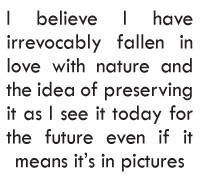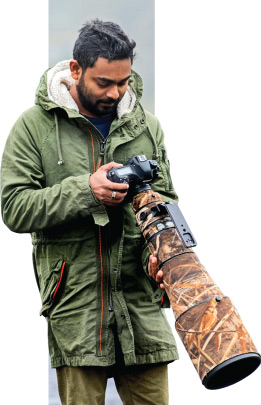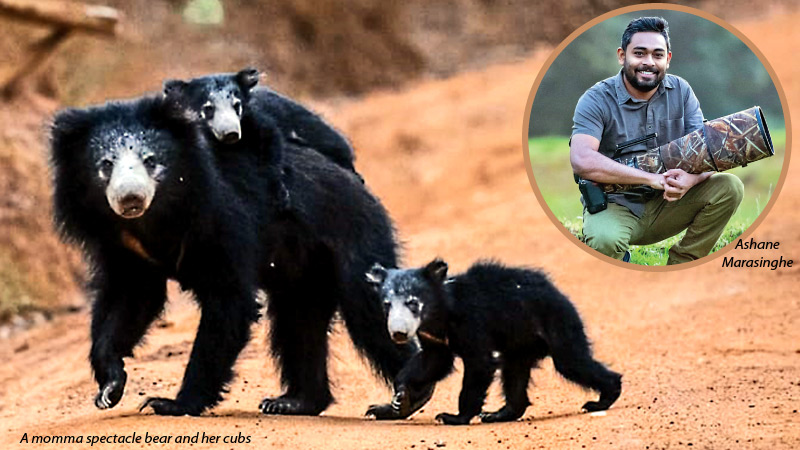This week we reached out to a celebrated photographer, an artistic genius and a naturalist. Ashane Marasinghe has worked in the aviation industry for 12 years, while embracing Photography as a hobby.

Ashane was awarded EFIAP/b distinction from The Federation of International Art of Photography – France, GPU Crown 02 from Global Photographic Union-Greece, cMOL from Master of Light – Canada, GPA.PESGSPC and Hon. PESGSPC – Cyprus, ANAPSL – Sri Lanka and SE.SSP – Sri Lanka. He emerged afinalist of Spain’s The Nature Photography Contest 2023, under the funny nature category.
 In conversation with Ashane here’s what we found out:
In conversation with Ashane here’s what we found out:
Q: Tell us how you got into photography?
I’ve always had the interest in wildlife photography ever since I was young but never had the opportunity to pursue it. Then in 2013 because my mother pushed me and enrolled for a short course in photography at the National Association of Photographers of Sri Lanka (NAPSL) and then a Diploma in Advanced Photography in 2014, I ended taking up photography as a hobby. Thereafter whenever there is a free time, I was running away to Yala or Wilpattu in the lookout for wildlife.
 Q: What is your favourite thing about being a wildlife photographer?
Q: What is your favourite thing about being a wildlife photographer?
The fact that I get to enjoy the beauty of the nature, the wild, the environment first-hand. We live in such fast-paced commercialized world that a break from all that is a gift. Not to mention the happiness I get from being able to capture such scenic moments and share them with everyone else.
Q: Let’s talk about your picture ‘oh my tongue’?
He’s actually a leopard cub of Cleo, a famous leopardess in Wilpattu national park. He was walking around with a sibling while I was tracking them. Seeing an audience one of them ran into the forest, this cub however decided to sit down in the middle of the trail and started cleaning itself. This was a moment captured while it was staring head on
Q: What was your experience like being a finalist at the 2023 contest?
This competition was held in Spain and last year there were 400+ entries from all across the world. The category I entered was the funny nature category and it was such a pleasure and an honor to receive a finalist Award from a an expert panel of judges – Luke Stackpoole, Cynthia Bandurek& Mario Cea
Q: What does your day look like as a photographer?
On a typical day I usually wake up around 5AM and leave the premises by around 6AM. This is the time that leopards will be roaming down to the road after their night kill and will most likely be found either grooming themselves or getting ready for their day time rest. The whole day is spent in the park tracking these leopards and that would sometimes mean staying in the same place for hours and this could go on for days especially if it’s a rarely seen animal.
Q: What inspires you to do what you do?
I believe I have irrevocably fallen in love with nature and the idea of preserving it as I see it today for the future even if it means it’s in pictures, seems like idealism to me. I’ve come across instances that are heartbreaking – animals caught in death traps set up by humans, elephants engulfed by mountains of trash and edging on the brink of extinction, and trees fallen. Photography is an opportunity to bring these issues to the forefront to speak of the unspeakable to document the harsh realities faced by the wildlife.
Q: Is wildlife photography your passion?
Yes. I first fell in love with David Attenborough’s nature documentaries and wanted to explore everything that I saw in them. Eventually, I realized photographing it was more my forte and that’s what made me happy and when I got the opportunity to pursue this, I embraced it wholeheartedly.
Q: What is the best thing about capturing nature in photo?
I get to t relive that experience and i get to share it with everyone else. It’s also the fact that not every moment captured is the same because these are behaviors of animals and we can’t replicate them, we can’t get them to pose for the photograph.
What you capture in that moment is as authentic as it gets and I love that authenticity.
Q: Do you like other forms of art? If so why?
I like street, travel and art photography and I used to engage in it for some time. But now I dedicate most of my time to wildlife photography.
Back when I was young, I also used to paint and I think even now I appreciate the works of artists because an art style is unique to each artist and watching such paintings is to read a story behind that.
Q: What do you think of the Sri Lankan photography industry?
Comparatively to other countries ours is still primitive. We are yet to employ new technologies and explore new opportunities. The trend of amateur photographers joining the industry has also declined with the increased cost of camera equipment.
Q: What advice will you give to a young and upcoming photographer?
Your first priority should be the safety of the animal, Photography is the second. When you use technology around animals be cautious. It’s their home and their habitat, and you are only a guest. If you know the behaviour of the animal, it will be much easier to understand their movement and capture brilliant photographs.









